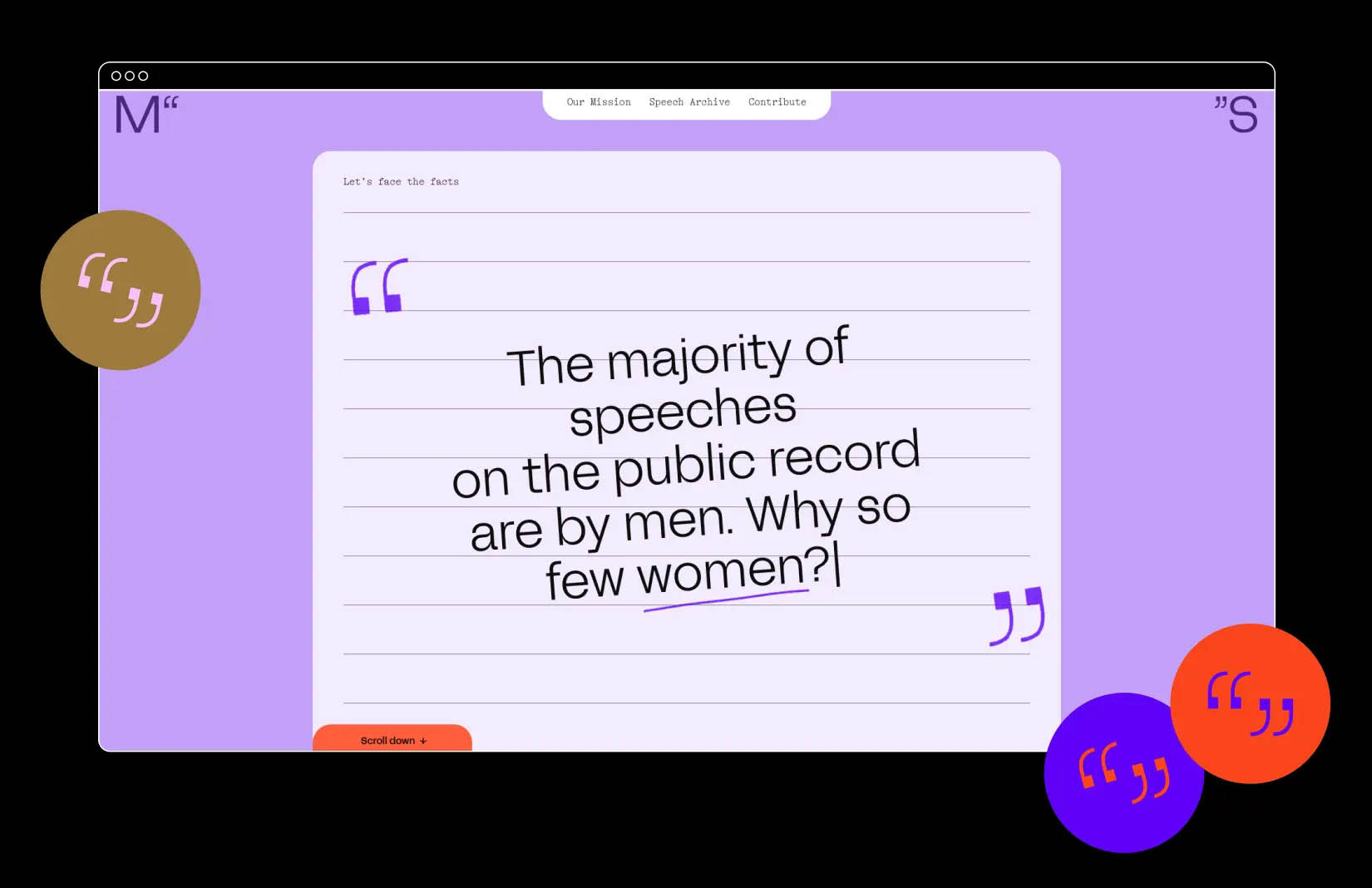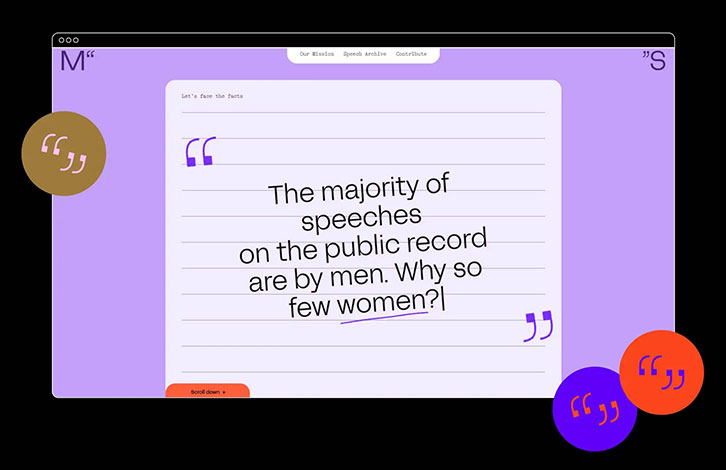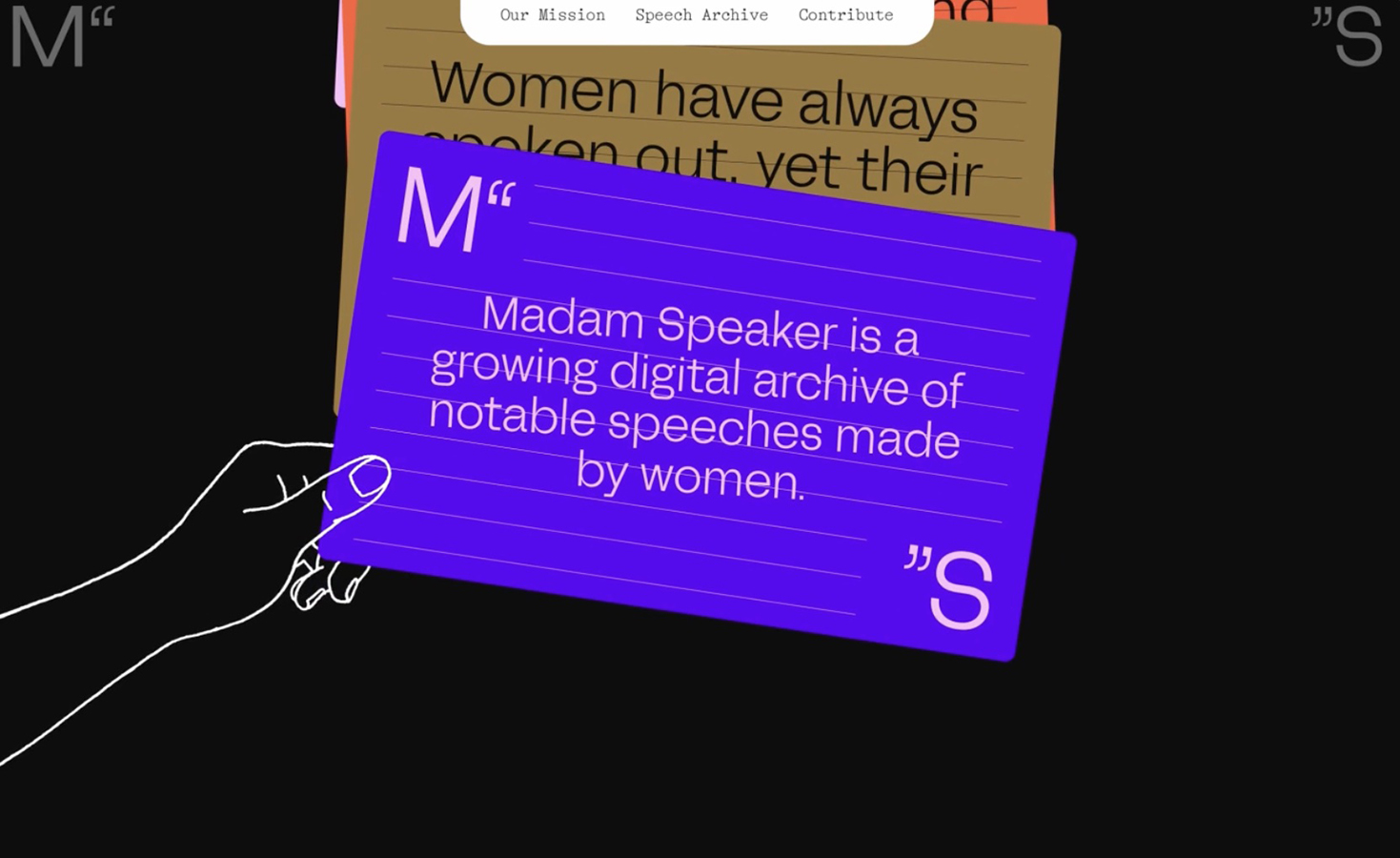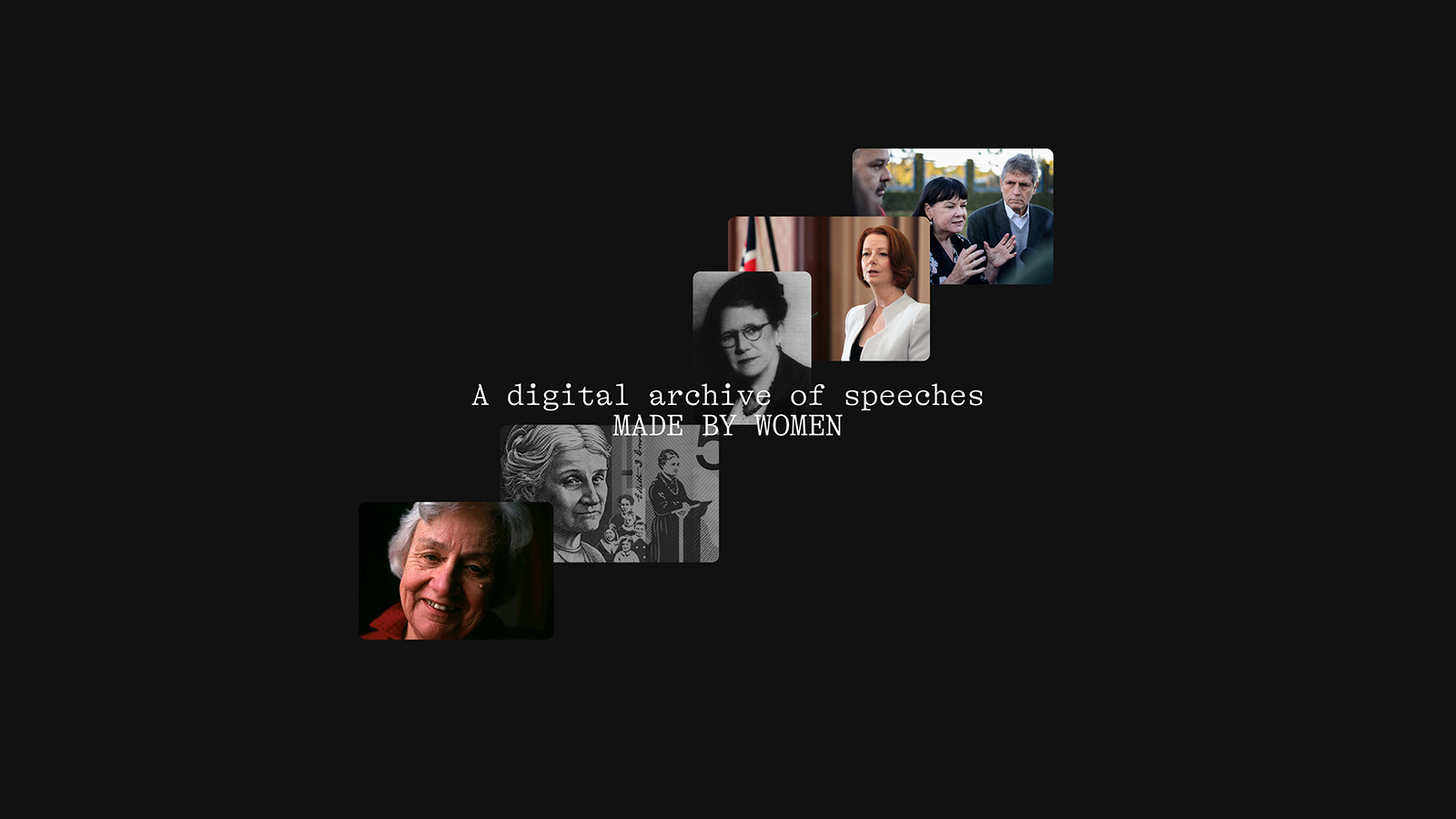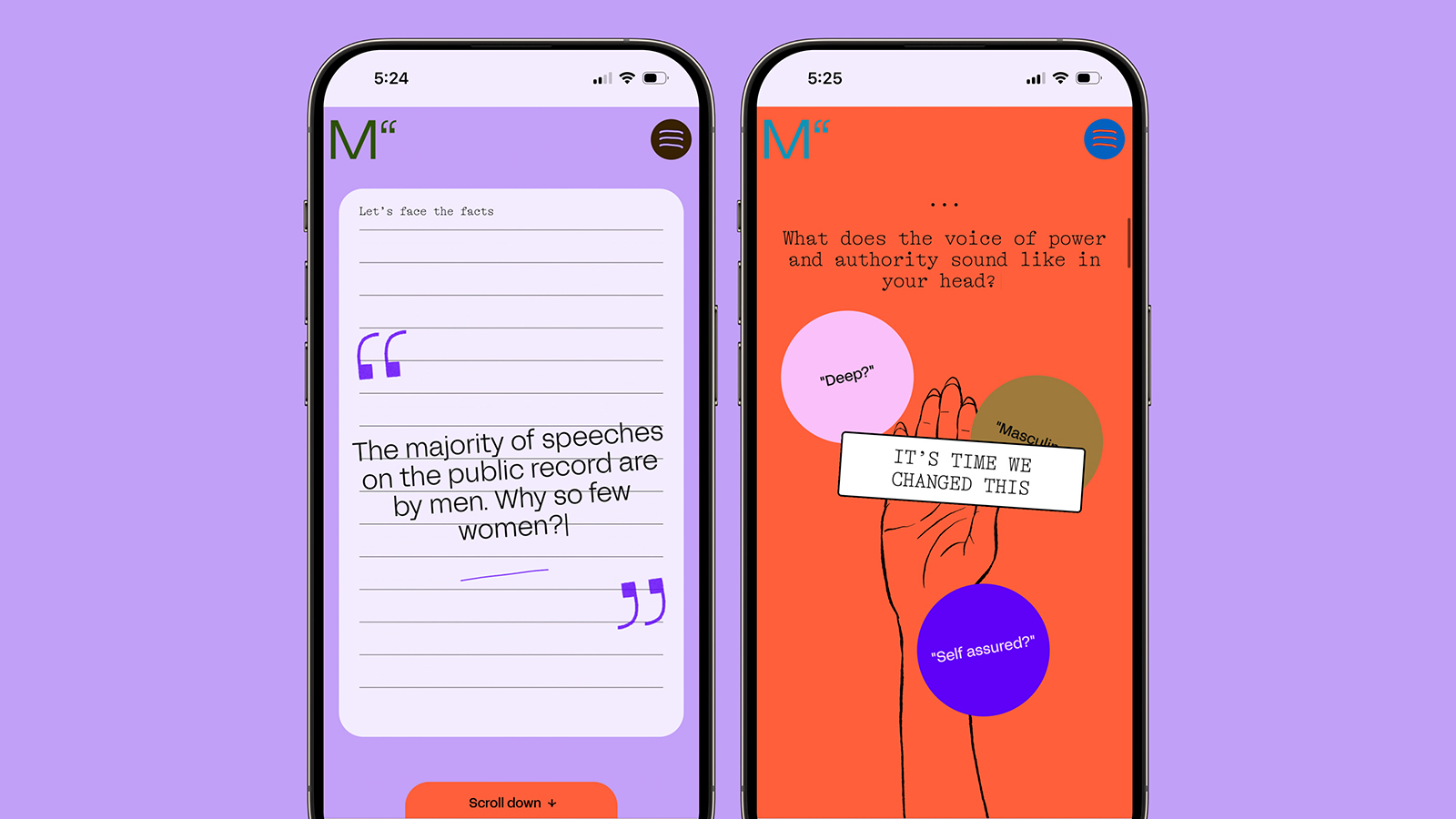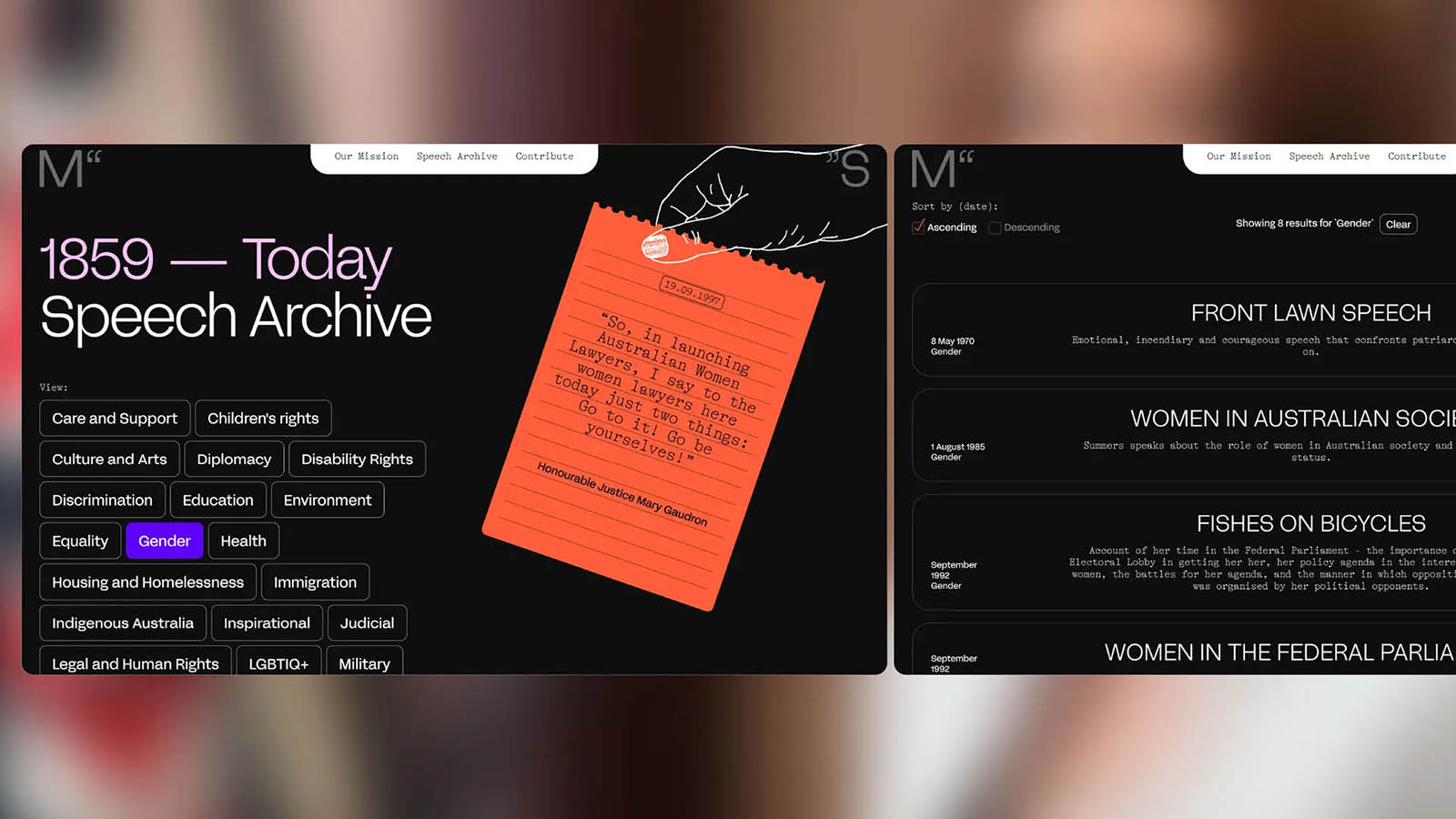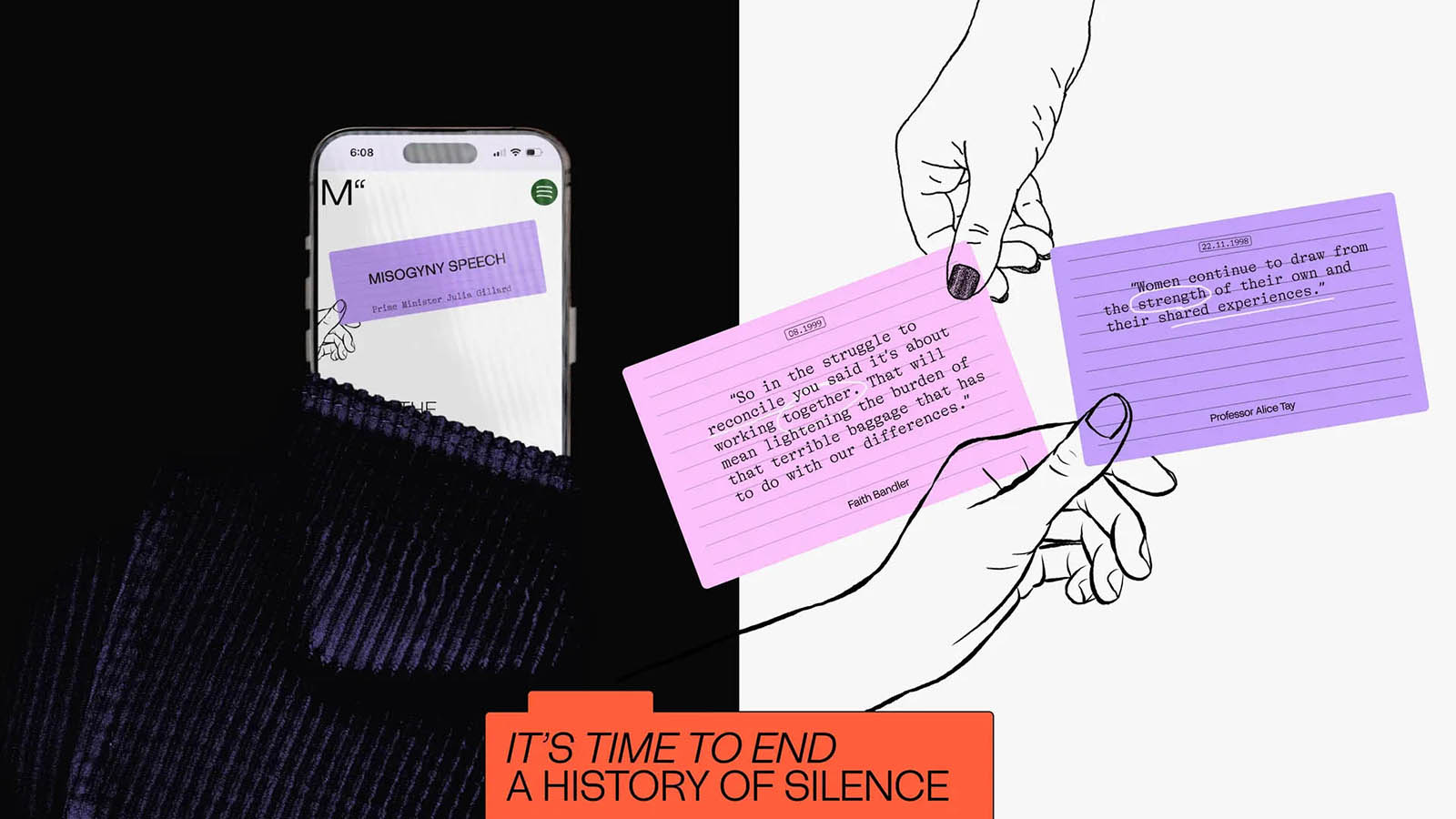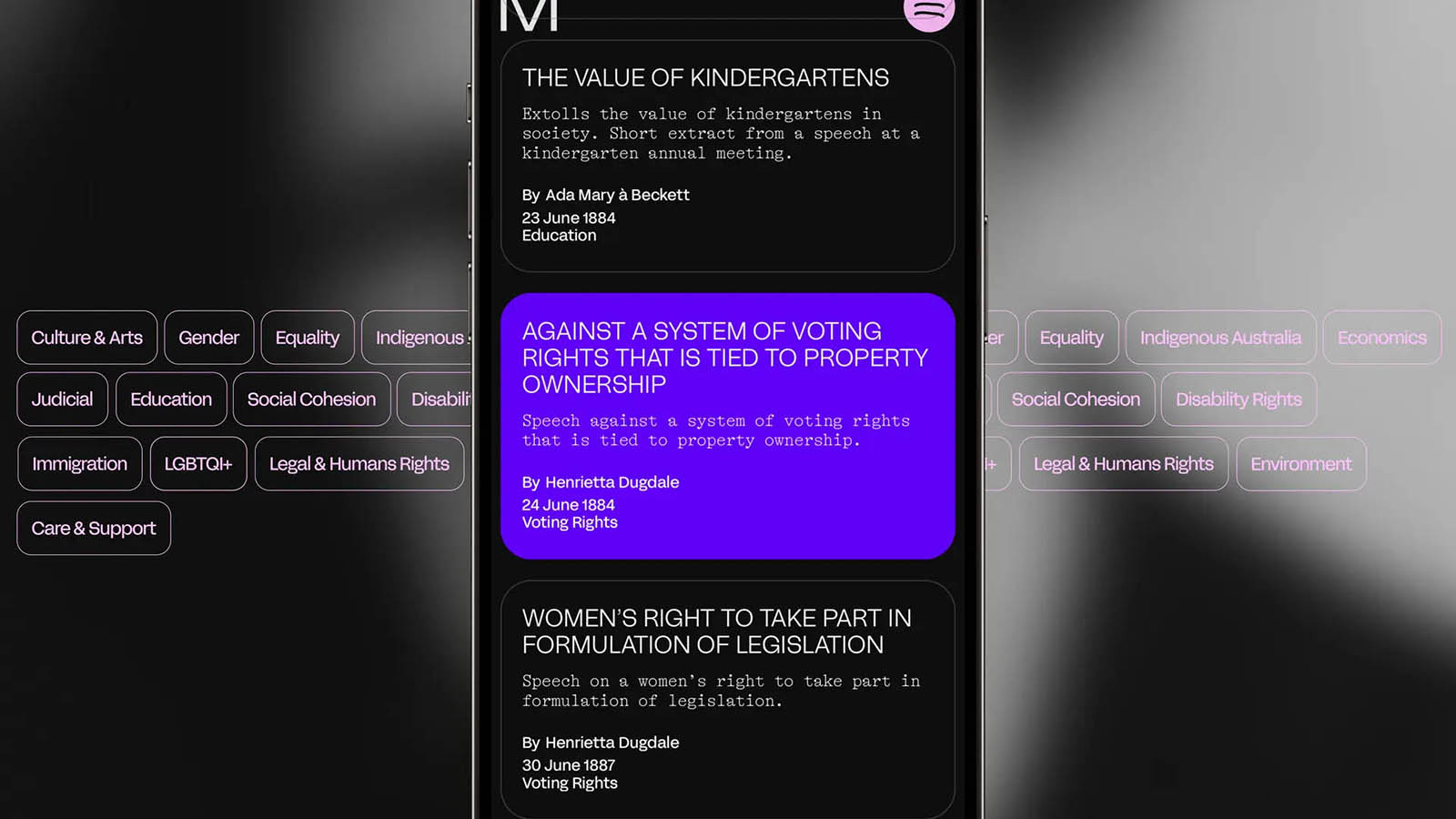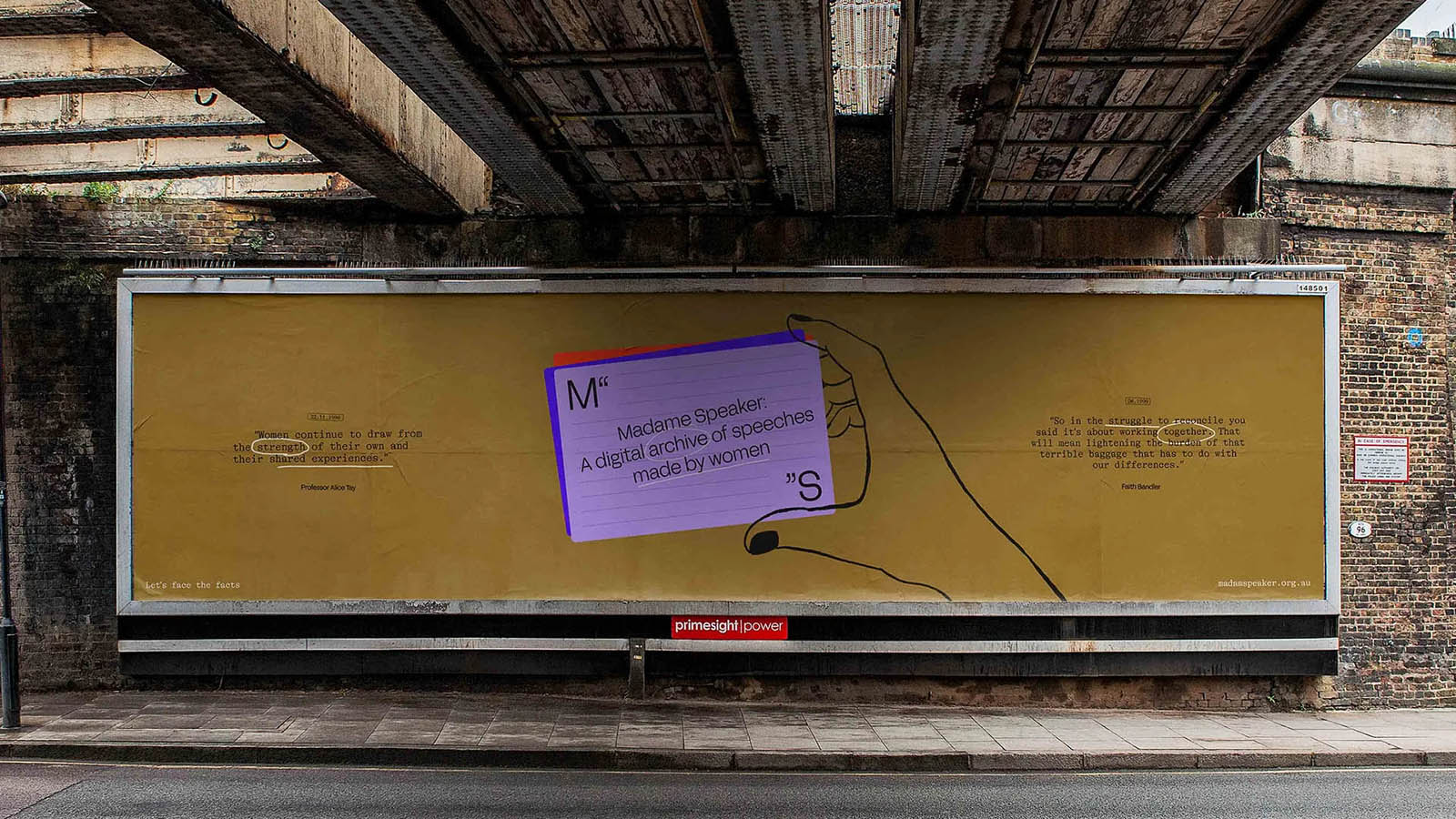Our approach began with research and immersion — understanding the systemic gaps in existing archives and the stories missing from public record. Over 18 months, we worked in close collaboration with the Victorian Women’s Trust to shape a new kind of archive — one that’s intuitive, participatory, and alive to cultural nuance.
The platform’s design draws from a hybrid visual language — part civic record, part activist zine. Lined cards, oversized quotation marks, and annotation-style highlights echo the rhythm of public speaking while reinforcing the content’s urgency. We categorised speeches by theme rather than identity to encourage users to explore shared challenges and movements across generations.
Accessibility and inclusion were embedded early. The site is fully WCAG-compliant and supports a public submission flow, enabling the archive to grow with community input. To humanise the interface, lead designer Eileen Li illustrated the hands of every woman involved in the project — a visual motif of care, labour and authorship woven throughout. Prototypes were tested with diverse user groups, including educators, media professionals and advocacy organisations, ensuring the interface served varied needs.
Development was handled in phases to align with content strategy and moderation processes. The result is a platform that doesn’t feel like a traditional archive — intentionally so. It is a space for voices to gather, be heard, and shift how we understand leadership in Australia. It exceeds the original brief by being both a historical resource and a tool for active cultural participation.

